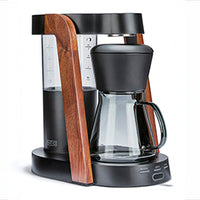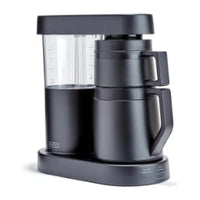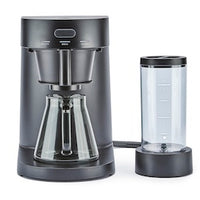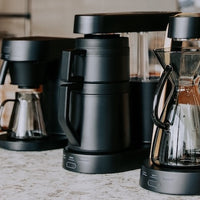A Simple Change That Keeps Iced Coffee From Tasting Weak
Key Takeaways
-
Weak iced coffee is often caused by ice melting too quickly and diluting the brew
-
Brewing a stronger base coffee can help offset ice melt dilution
-
Using coffee ice cubes preserves flavor instead of watering it down
-
Cooling coffee before pouring over ice minimizes immediate melting
-
Pairing these techniques ensures a full-bodied iced coffee from first sip to last
Few things are more disappointing than taking a refreshing sip of iced coffee, only to find it tastes like watered-down leftovers from the pot. This common problem has a surprisingly simple solution — and it all comes down to adjusting how you prepare the coffee before it hits the ice.
The Real Reason Iced Coffee Turns Weak
The culprit isn’t just the ice itself — it’s how fast it melts. When hot or warm coffee hits ice, the immediate temperature difference melts the cubes rapidly, sending extra water into your drink before you’ve even taken a sip.
Even if you start with flavorful coffee, that quick dilution robs it of body, sweetness, and complexity.
Step One: Brew It Stronger
One of the easiest fixes is to increase your coffee-to-water ratio when brewing the base. For example:
-
Standard ratio: 1 gram of coffee per 16 grams of water
-
Iced coffee ratio: 1 gram of coffee per 14 grams of water (or even 1:12 for bold flavor)
This compensates for the inevitable dilution that comes from melting ice, without making the coffee unpleasantly bitter.
Tip:
Use freshly ground beans for the best results, as stale coffee loses its aromatic compounds faster and tastes flat more quickly.
Step Two: Cool It Before You Ice It
Pouring boiling-hot coffee directly over ice is an instant recipe for rapid melting. Instead:
-
Brew your coffee as normal.
-
Let it sit at room temperature for 10–15 minutes.
-
Transfer it to the fridge for 20–30 minutes before serving.
This lowers the temperature enough that the ice melts slower while still keeping your drink cold and refreshing.
Step Three: Make Coffee Ice Cubes
This is the game changer. Instead of regular ice, freeze leftover brewed coffee into cubes. When they melt, they add more coffee to your drink instead of plain water.
How to do it:
-
Brew a pot of coffee.
-
Pour the cooled coffee into an ice tray.
-
Freeze overnight.
You can use these cubes in combination with regular ice to strike a balance between chill and flavor.
Step Four: Choose the Right Glass and Ice Shape
-
Larger cubes melt slower than smaller ones.
-
Spherical ice molds reduce surface area, extending melt time.
-
Tall, narrow glasses slow the warming process compared to wide mugs.
Every little detail in presentation helps maintain your drink’s structure and taste.
The Ratio Coffee Approach
A well-brewed iced coffee starts with precision hot brewing. Using a coffee machine from Ratio Coffee ensures you have a strong, clean base that holds up even when chilled. From there, applying the stronger brew ratio and coffee ice cube method keeps the flavor intact until the last sip.
Bringing It All Together
You don’t need to overhaul your recipe — just tweak it. Brewing stronger, cooling before icing, and using coffee ice cubes can completely transform your iced coffee experience. Instead of racing against the clock before dilution sets in, you can relax and savor each sip.
Frequently Asked Questions
Will stronger coffee taste too bitter when iced?
Not if you use high-quality beans and a balanced brewing method. The extra strength is offset by ice melt.
Can I use cold brew instead of hot-brewed iced coffee?
Yes — cold brew is naturally less acidic and stays flavorful over ice, but these tips can still enhance it.
How long will coffee ice cubes last in the freezer?
They can keep for up to two weeks without significant flavor loss if stored in a sealed container.
Do coffee ice cubes work with milk-based drinks?
Absolutely. They’re great in iced lattes and mochas to keep them bold without watering them down.
Is pre-cooling really worth the effort?
Yes. It slows dilution significantly, especially if you like to linger over your drink.
 Ratio Eight S2
Ratio Eight S2
 Ratio Eight Original
Ratio Eight Original
 Ratio Six
Ratio Six
 Ratio Four
Ratio Four
 Compare Machines
Compare Machines






